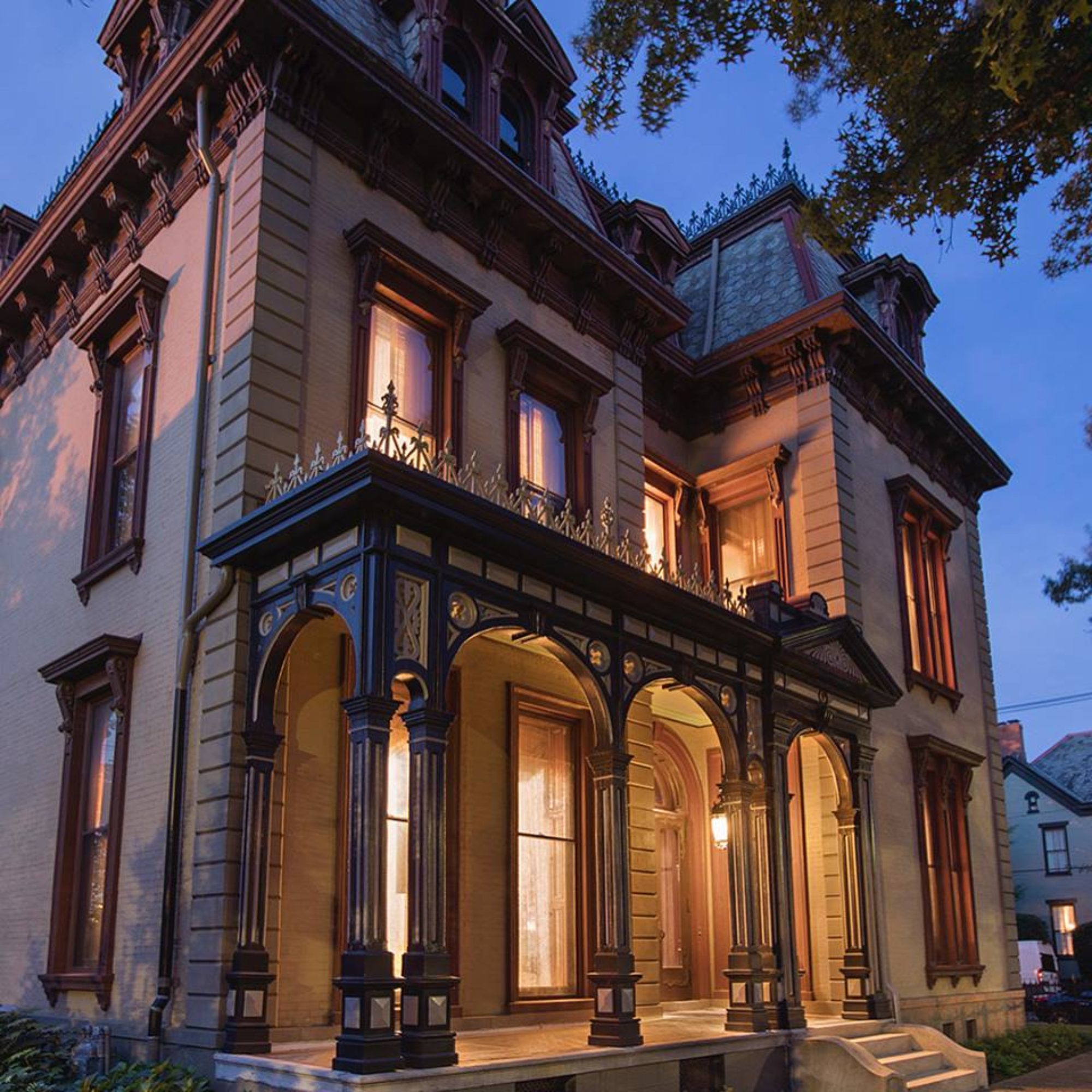Built in 1871 by lumber baron John Augustus Reitz, the Reitz Home is one of the finest examples of French Second Empire architecture in the country. Reitz, a Prussian immigrant, built his wealth in Evansville’s thriving hardwood industry, earning the title “The Lumber Baron.” His family played a significant role in the city’s business, philanthropy, and development.
After remaining in the Reitz family until 1931, the home changed hands several times before the Evansville Junior League led efforts to preserve it. In 1974, the Reitz Home Museum was established, showcasing period furnishings, intricate parquet floors, stained glass, and elaborate hand-painted ceilings. Listed on the National Register of Historic Places, the museum has gained national recognition, including features in Victorian Homes Magazine and on HGTV. Today, it stands as a beautifully preserved tribute to Evansville’s Gilded Age elegance.
Our mission is to preserve, interpret, and promote the history of the Reitz family and the broader heritage of the Victorian era in the Midwest. The museum offers guided tours, educational programs, and special events that engage the community and foster an appreciation for historical preservation. By providing these enriching experiences, the Reitz Home Museum serves as a vital educational resource and a center for community engagement, celebrating the region’s rich historical legacy.
